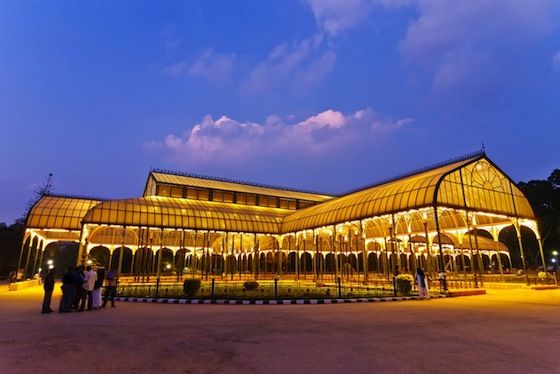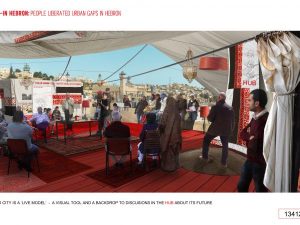 Finding building materials that are appropriate for hot desert conditions is one of the biggest challenges facing the Middle East and North Africa region’s construction industry. While earth used in architecture found in Egypt, Libya, Yemen and elsewhere is typically considered the most effective material for keeping interior temperatures low while the sun acts like a giant blowtorch outside, it isn’t popular among contemporary designers.
Finding building materials that are appropriate for hot desert conditions is one of the biggest challenges facing the Middle East and North Africa region’s construction industry. While earth used in architecture found in Egypt, Libya, Yemen and elsewhere is typically considered the most effective material for keeping interior temperatures low while the sun acts like a giant blowtorch outside, it isn’t popular among contemporary designers.
Instead, we see a lot of new buildings – particularly in urban environments – constructed with steel and glass, which exacts an enormous cooling load and requires water, another scarce resource, for cleaning. But the future holds promise; researchers from Stanford University have created a nanophotic panel that reflects sunlight off of buildings (or cars and other structures), and beams heat out right of the earth’s atmosphere.
Scientists have long sought a way to prevent buildings from absorbing heat from sunlight during the day and radiating it back into space, and now a team from Stanford University have done that. They published their findings in the journal Nano Letters.
The trick is to produce a material that can not only reflect sunlight, to prevent absorption of heat, but also to radiate that thermal energy beyond the earth’s atmosphere at a very specific wavelength to ensure that the heat isn’t simply radiated back to earth.
Known as the greenhouse effect, this trapping of heat is one of the mechanisms behind global warming and climate change.
“We’ve developed a new type of structure that reflects the vast majority of sunlight, while at the same time it sends heat into that coldness, which cools manmade structures even in the day time,” Shanhui Fan, professor of electrical engineering and the paper’s senior author, told Physorg.
They have been able to incorporate both the reflective and radiative cooling effects into one material, which is made of quartz and silicon carbide. While it is unclear how readily available these materials are for mass production, or whether they can be harvested from existing materials, they don’t absorb sunlight well, which allows the building or car on which they are placed to stay cool even during the heat of the day.
Replacing just 10 percent of a roof’s surface with this material can theoretically mitigate 35 percent of that building’s cooling load, according to Physorg, – an exciting prospect for governments that are serious about slashing their energy consumption in the face of growing energy scarcity.
Even better, this passive technology mitigates carbon emissions given that air-conditioning units would be obsolete in a building clad in such engineered panels.
As our informed followers point out, the Stanford team’s breakthrough is still conceptual, but at the very least scientists are starting to think more creatively about how to reduce the building industry’s detrimental environmental impact.
:: Physorg
Image of glass building, Shutterstock




could never be used on the millions of roofs about the world,,, cost astranomical…globally all buildings are grossly poor in design and mostly inapropriate for the climatic locations…apart from the structural engineering no thought is given to location or appropriate exterior….Still, there are at least some people out there THINKING…
HOW MUCH HEAT DO ONE MILLION AIR CONDITIONERS PUMP INTO THE ATMOSPHERE?? HOW MUCH HEAT DO ONE MILLION CARS?? OR ONE MILLION PEOPLE??..THE HUMAN ANIMAL IS HIGHLY INTELLIGENT AND YET STILL THE DUMBEST ANIMAL ON THE PLANET…
In the late 60’s when I worked on the space program, there was a material developed by Lockheed called optical solar reflector (OSR) which backed sheets of quarts with a silver or gold coating. It’s solar absorbance was less than 5% and it’s emissivity was close to 90%. The incoming sunlight went through the quartz with very little absorption. The silver reflected more than 95% of the sunlight. The quartz then radiated the small amount of absorbed heat with a thermal emmissivity at room temperature of more than 90%. A piece of it in sunlight in space would become very cold. It was used to coat heat rejection radiators and for thermal control on unmanned spacecraft and satellites.
I take back what I said – just looked at Physorg and they state it also cools – so this math could work out if it does indeed suck the heat, so to speak, out of a building. This would require that you remove the roof insulation though (which you would need in the winter) and may require active insulation moving so you don’t cool your building too much. anyhow – exciting stuff I say!…hopefully more details on longevity, cost, etc. will be released soon.
so if you cover 10% of a roof your cooling loads will go down 35% !!! That sounds impossible unless the roofing generates cooling. What about lighting, equipment, windows and other sources of heat?
What happens if you cover 100% of your roof?? – do the math.
Anyhow – I am sure the product is amazing and very good, I just wish the writers and scientists were move careful with the math.